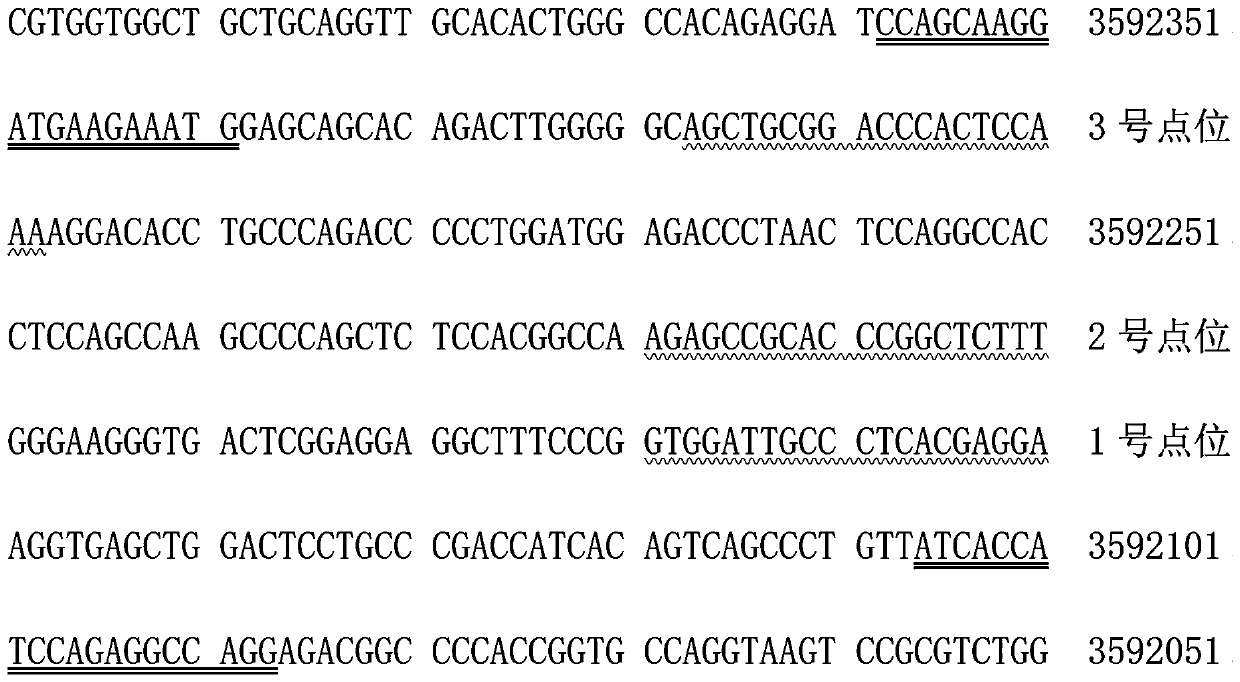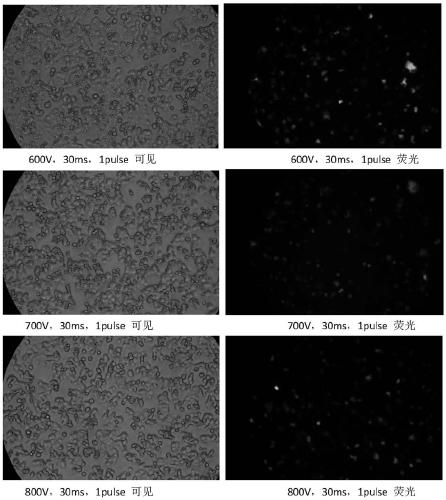Human colorectal adenocarcinoma cell TRPV1 gene knockout cell strain and application
A rectal adenocarcinoma and gene knockout technology, applied in the field of genetic engineering, can solve the problems of affecting experimental results, failure of antagonism, difficulty in controlling the dosage of antagonists, etc.
- Summary
- Abstract
- Description
- Claims
- Application Information
AI Technical Summary
Problems solved by technology
Method used
Image
Examples
Embodiment 1
[0029] Example 1 Construction of human colorectal adenocarcinoma cell line with TRPV1 gene knockout
[0030] 1. Experimental method
[0031] (1) Determination of the minimum total lethal concentration of purine toxin (Puro) on cells
[0032] Digest Caco-2 cells with trypsin to prepare Caco-2 cell suspension, count the Caco-2 cell suspension, inoculate 50,000 cells per well of 24-well plate, 500 μL per well, add Puro at different concentrations of 0, 0.5, 0.75, 1, 2, and 4 μg / mL was observed under the microscope after 2-3 days, and the lowest concentration that was completely lethal to the cells was selected as the drug screening concentration for subsequent experiments.
[0033] (2) Monoclonal growth verification test
[0034] Digest Caco-2 cells with trypsin to prepare Caco-2 cell suspension, take Caco-2 cell suspension, count and perform limiting dilution, so that the number of cells per well in the final 96-well plate is 1, and the diluted Cells at 37°C, 5% CO 2 Culture...
Embodiment 2
[0066] Example 2 Detection of protein expression level of TRPV1 gene knockout cell line
[0067] 1. Experimental method
[0068] Use the mixture of RIPA protein lysate and protein phosphatase inhibitor to lyse the cells, measure the protein concentration after centrifugation, take 20μg protein sample and mix with 5×SDS protein sample buffer, boil at 95°C for 10min, and use 12% separation gel SDS-PAGE protein electrophoresis, 80V for 40min, 100V for 30min; wet transfer at 200A for 1.5h; block with 5% skimmed milk in TBST solution at room temperature for 1.5 hours; anti-TRPV1 polyclonal antibody (Abcam) diluted 1:1000. GAPDH (Abcam ) was diluted 1:10000 and incubated at room temperature for 2 hours. Wash 3 times with TBST, 10 min each time.
[0069] 2. Experimental results
[0070] The expression of TRPV1 protein in the cells was detected. Such as Figure 7 As shown, the TRPV1 protein expression level of the knockout cell line was significantly lower than that of the wild c...
Embodiment 3
[0071] Example 3 Comparison of TRPV1 gene knockout cell line and wild cell proliferation rate
[0072] 1. Experimental method
[0073] The WT and KO cells in the logarithmic growth phase were digested into cell suspensions with digestive fluid, counted with a cell viability detection instrument, and the cell concentration was adjusted to 1.25×10 5 Viable cells / mL, then inoculated on 6-well cell plates, 2 mL per well, placed in a 37°C, 5% CO2 incubator for static culture, and digested and counted cells in 3 wells at 12h, 24h, 36h, and 48h after inoculation , draw the growth curves of the two kinds of cells, and observe whether TRPV1 gene knockout affects the growth efficiency of Caco-2 cells.
[0074] 2. Experimental results
[0075] In order to evaluate whether TRPV1 gene knockout has any effect on the growth performance of Caco-2 cells, the growth rates of the two kinds of cells were measured respectively. There was no significant difference in the growth rate between 0-48h ...
PUM
 Login to View More
Login to View More Abstract
Description
Claims
Application Information
 Login to View More
Login to View More - R&D
- Intellectual Property
- Life Sciences
- Materials
- Tech Scout
- Unparalleled Data Quality
- Higher Quality Content
- 60% Fewer Hallucinations
Browse by: Latest US Patents, China's latest patents, Technical Efficacy Thesaurus, Application Domain, Technology Topic, Popular Technical Reports.
© 2025 PatSnap. All rights reserved.Legal|Privacy policy|Modern Slavery Act Transparency Statement|Sitemap|About US| Contact US: help@patsnap.com



